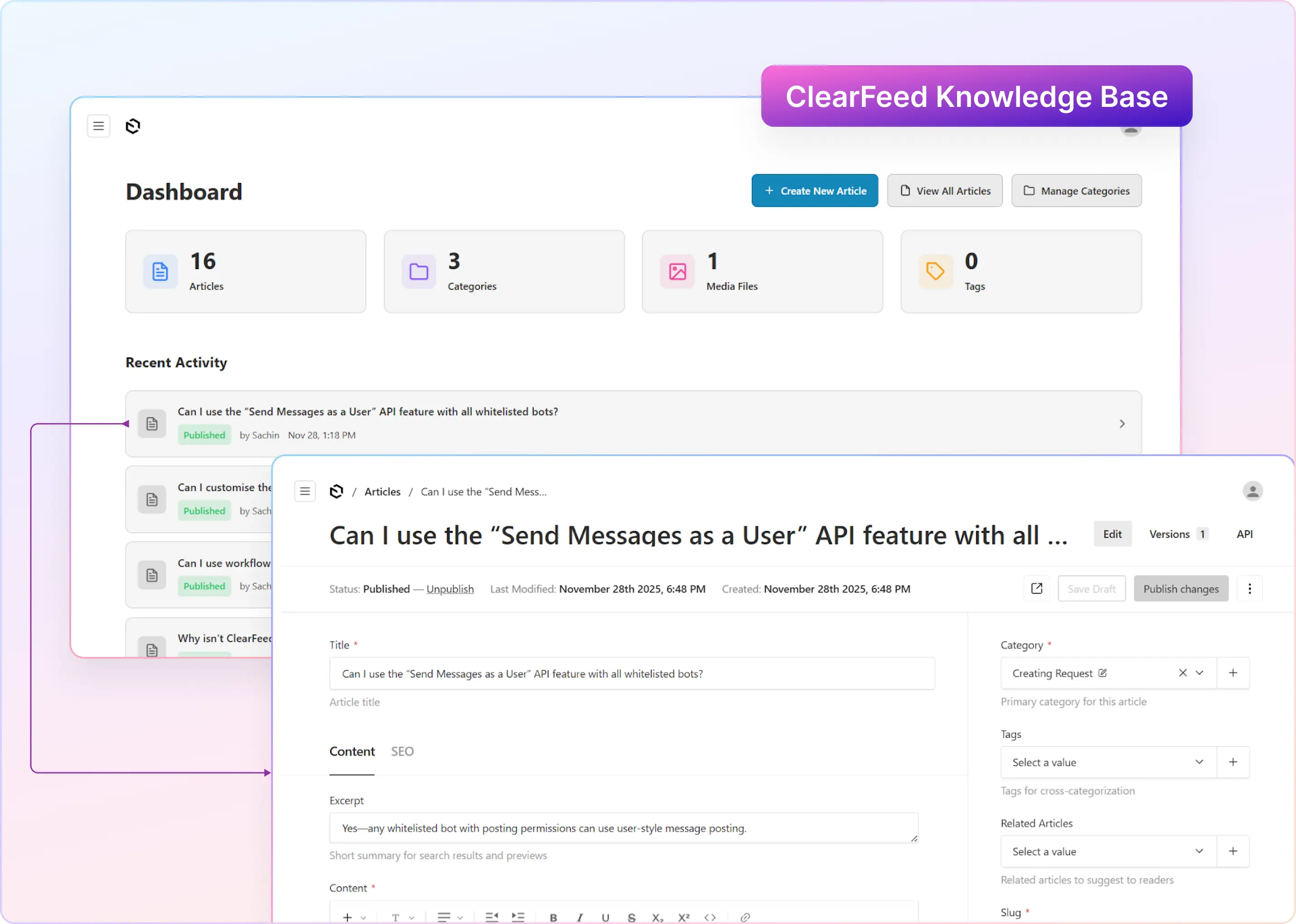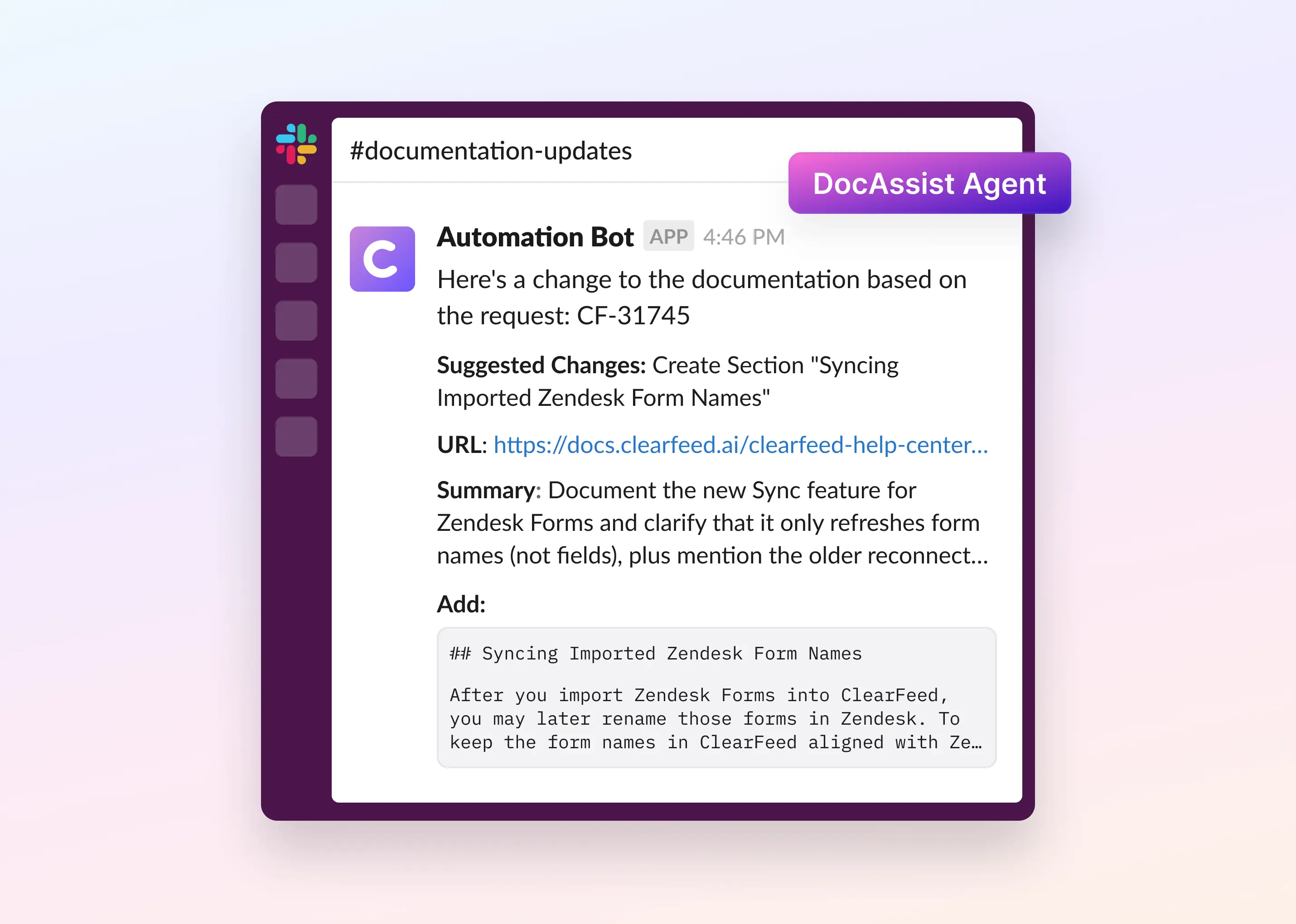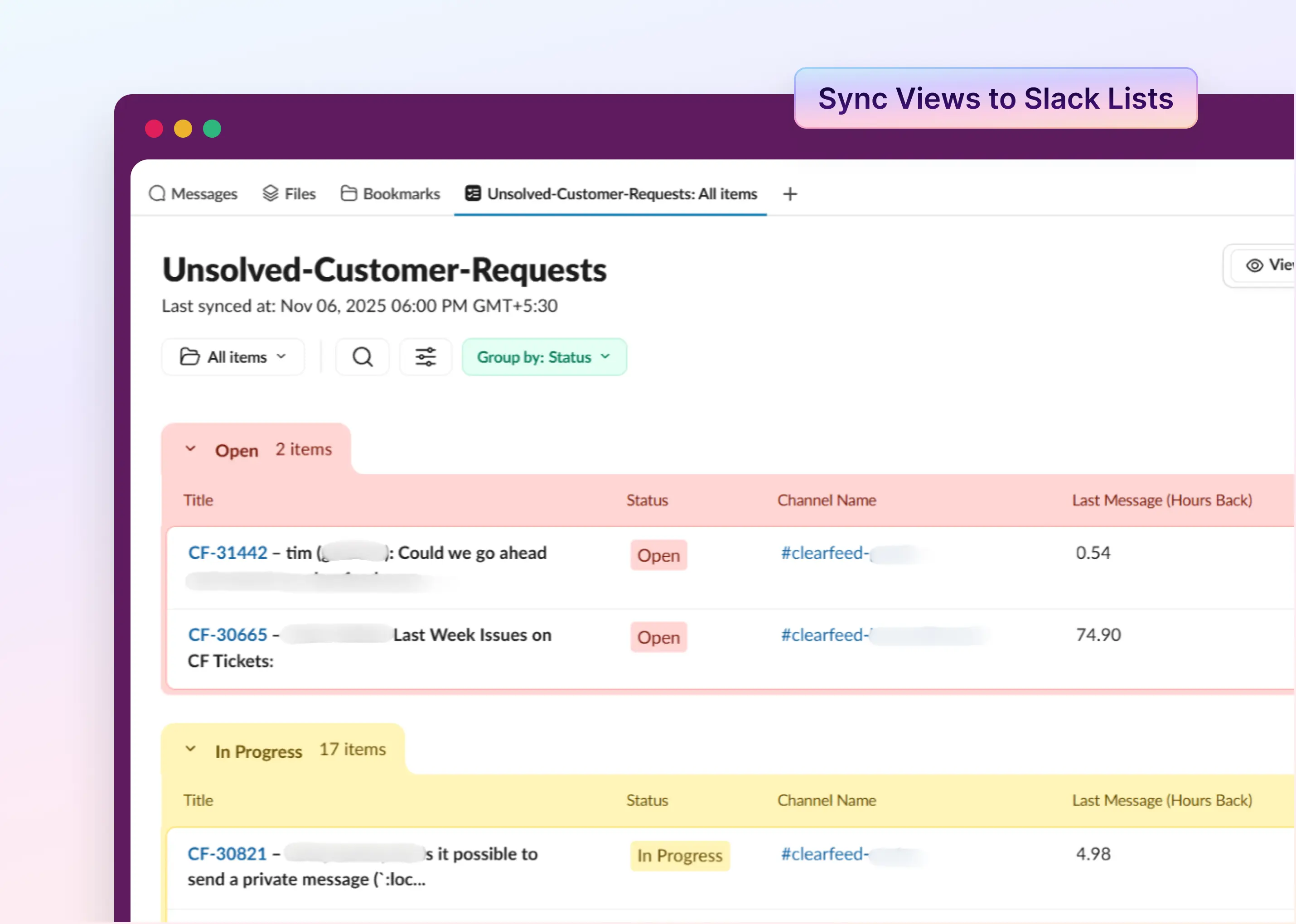Ever wondered if your product could truly deliver the results you promise?
A Proof of Concept (POC) lets you show potential clients exactly what your solution can do before they make the leap. While POCs are mainly associated with sales or IT implementations, they are equally important in customer support. With the increasing complexity of customer expectations and the growing array of support tools available, businesses are turning to POCs to test the feasibility and effectiveness of new customer support solutions.
Here, we’ll explore how a POC in B2B works, its benefits, the challenges businesses face, and best practices for executing a successful one.
What Is a POC in B2B?
A Proof of Concept in B2B is a demonstration or trial run that allows a business to test a solution before committing to a full implementation. It helps prove that a product, service, or solution can solve a specific problem or enhance existing operations.
For customer support teams, a POC is especially valuable. It allows you to see how well a new solution integrates with your existing systems, workflows, and customer service strategies. A well-executed POC can reveal whether a tool will improve support agents' efficiency, enhance communication, and ultimately boost customer satisfaction.
While a demo shows the solution’s features in a perfect setup, a POC uses actual data and real-life scenarios. This lets support teams test the solution in a practical setting and get a clearer picture of its value.
Why Is a Successful POC Important?
For customer support teams, a POC is a safety net for testing new tools and strategies without disrupting daily operations. Here's why a well-executed POC is so crucial:
- Reduces Risks: It verifies that the solution works as promised, avoiding costly mistakes.
- Supports Adoption: If the POC is successful, clients are more likely to adopt the solution smoothly.
- Ensures Compatibility: It tests how well the solution works with your current systems.
- Improves Customer Experience: A POC shows if the solution enhances customer interactions.
- Provides Data for Decisions: Real-time data from the POC helps make informed decisions.
- Enables Feedback: You can gather feedback during the POC to make improvements before full implementation.
To fully grasp the value of a POC, it's important to recognize the various types available and how each one aligns with different business goals.
What Are the Different Types of POC in B2B?
There are several types of POCs, each tailored to different business models and customer needs. Here’s how they can be applied to the customer support industry:
- Highly Tailored POC: This type of POC is custom-designed for high-value, strategic accounts. It addresses specific business challenges and regulatory needs.
Example: A cloud service provider might create a tailored POC to help a healthcare client meet specific regulatory compliance requirements for data storage.
- Pilot POC: A smaller-scale version of the product, allowing businesses to test the solution before full deployment. This is useful for new solutions that need to be tested across departments.
Example: A customer support team might run a pilot POC of a new ticketing system, testing it with just one support group before rolling it out across the entire team.
- Limited-Functionality POC: A limited-functionality POC only showcases the core features of the solution. This type of POC is ideal for solutions that require minimal customization.
Example: You might test only the ticketing feature of a helpdesk solution, rather than testing the full range of its capabilities.
- Self-Service POC: A self-service POC lets customers or support agents try the product on their own, usually through free trials or demos. It helps test how easy the solution is to use independently.
Example: A support agent can try a free trial of a helpdesk tool to see how easy it is to use without needing help from the sales team.
So, how do you get started with a POC? The process is straightforward, and following a few key steps can set you up for success.
How to Build a Successful POC in B2B?
Implementing a POC requires a clear, structured approach to ensure the solution is properly tested and validated. Here are the key steps involved:
1. Identify Business Needs and Challenges
Before starting the POC, you need to define your goals. What do you want to achieve? Do you want to improve response times? Streamline ticket management? Or enhance customer satisfaction? Setting clear objectives will help you determine if the solution meets your needs.
For example, if you're testing a live chat tool, your goal might be to reduce wait times and improve first response times.
2. Select the Right Solution
The next step is selecting the right customer support tool or platform that promises to solve these issues. This could be anything from an AI-powered chatbot to a live chat tool, helpdesk software, or a complete customer service suite.
For example, if your team struggles with handling customer inquiries across multiple channels, a unified communication platform might be the solution. If your team is overwhelmed during peak times, an AI chatbot might be a good choice.
3. Define Success Criteria
To measure the effectiveness of your POC, set clear criteria for success. Consider what success looks like for you, whether it's achieving specific performance metrics, meeting user expectations, or validating key assumptions. This can include:
- User Engagement: Are your agents using the tool regularly?
- Response Time: Has the time to respond to customer queries improved?
- Customer Satisfaction: Are your customers happier with the support they’re getting?
- Integration Success: Did the tool integrate smoothly with your existing systems?
- Cost Efficiency: Is the solution saving you money or improving productivity?
4. Launch the POC and Monitor Performance
Once you’ve chosen the tool and set success criteria, start the POC. Make sure agents know how to use the system and understand the goals.
As the POC progresses, keep track of important metrics like:
- Ticket resolution time
- Customer satisfaction (CSAT) scores
- Agent productivity and efficiency
- Adoption rates by support agents
5. Gather Feedback
As the POC runs, gather feedback from customer support agents and customers. This feedback is important for understanding how the solution performs in a real-world setting and identifying areas for improvement.
- From Agents: Are they finding the tool easy to use? Does it help them resolve tickets faster? Are there any features they feel are missing?
- From Customers: Are they experiencing faster responses and resolutions? Are they satisfied with the overall support experience?
6. Refine the Solution & Make the Final Decision
Based on the feedback, make adjustments to improve the tool. Once the changes are made, decide whether to move forward with the solution. If it meets your goals, it’s time to implement it across the team. If not, consider other options.
As you move forward with building your POC, it's important to keep in mind the common pitfalls that can hinder its success.
Common Pitfalls to Avoid When Running a POC
Proof of Concept is an important step, but if not handled correctly, it can backfire. Avoid these common pitfalls:
- Miscommunication: Failing to set clear expectations and maintain open communication can lead to confusion.
- Limited Data: Relying on insufficient data may result in an incomplete evaluation of the solution’s effectiveness.
- Integration Issues: Not thoroughly testing the solution before integration can lead to complications with existing systems.
- Lack of Feedback: Failing to gather consistent feedback from agents and customers can hinder improvements.
- Time and Resource Shortages: Not allocating enough time or resources can lead to an incomplete or rushed POC.
- Unclear Goals and KPIs: Without clear objectives and measurable criteria, it’s difficult to assess the POC’s success.
- Excluding Key Stakeholders: Not involving the right decision-makers can cause misalignment and confusion.
How ClearFeed Makes It Easy to Build a B2B Proof of Concept
ClearFeed is an AI-powered customer support tool that works inside platforms like Slack and Microsoft Teams. It’s built for modern B2B companies that want to try out and improve their support workflows—without a ton of effort. Here’s how ClearFeed helps you set up and run a POC quickly and effectively:
1. All Your Support in One Place
- ClearFeed pulls in customer questions and issues from Slack, Teams, Email, Web Chat, and more—putting them all in one clean dashboard.
- This means you can test how multi-channel support works for your team without building complex systems or changing your current tools.
- It also connects easily with tools you already use like Jira, ClickUp, HubSpot, and Salesforce, so your team doesn’t have to switch platforms to try something new.
2. Faster Responses and Smarter Feedback
- ClearFeed uses AI (like GPT) to help your team answer questions faster—up to 5x quicker than usual.
- That’s especially useful during a POC, where you want to show you can respond fast and keep customers happy.
- It also tracks SLAs (response time goals) and sends alerts, so nothing slips through the cracks while you're testing your new setup.
3. Built for Teamwork and Flexibility
- Support, product, and engineering teams can chat privately inside Slack about any customer issue, making it easier to resolve things faster.
- You can customize workflows, change the look and feel, and even fine-tune the AI’s tone—so the experience feels like it truly belongs to your company.
4. Track Results That Matter
- ClearFeed gives you real-time data on what’s working: how fast your team is replying, whether SLAs are being met, and how happy customers are.
- These insights help you prove the success of your POC and decide whether to scale it across the company.
5. Enterprise-Grade Security
- ClearFeed follows top security and privacy standards (like SOC 2, GDPR, and end-to-end encryption), which is critical when you’re testing with sensitive customer data.
Want to know more about how ClearFeed can help you better your relationship with clients? Get in touch with us today!
















